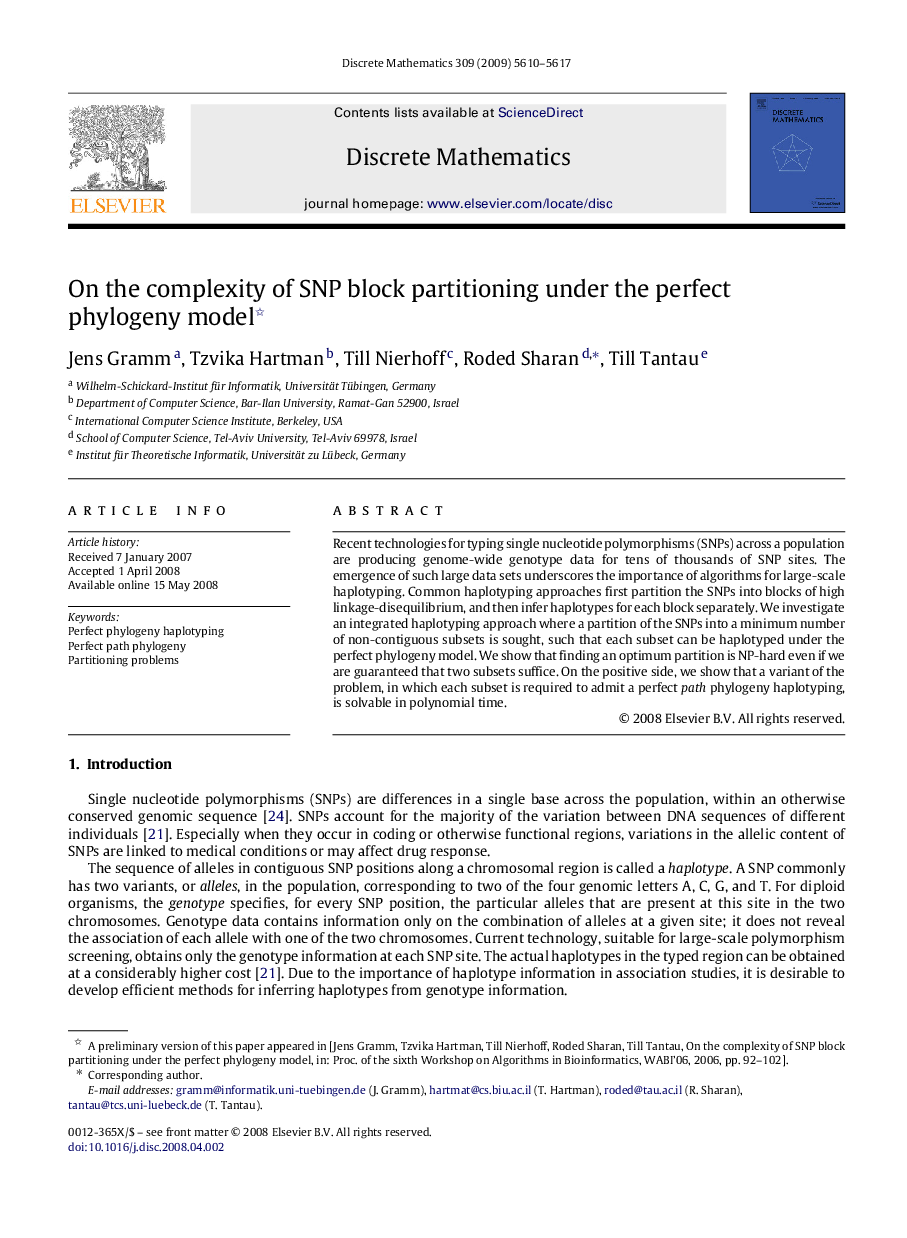| Article ID | Journal | Published Year | Pages | File Type |
|---|---|---|---|---|
| 4649458 | Discrete Mathematics | 2009 | 8 Pages |
Recent technologies for typing single nucleotide polymorphisms (SNPs) across a population are producing genome-wide genotype data for tens of thousands of SNP sites. The emergence of such large data sets underscores the importance of algorithms for large-scale haplotyping. Common haplotyping approaches first partition the SNPs into blocks of high linkage-disequilibrium, and then infer haplotypes for each block separately. We investigate an integrated haplotyping approach where a partition of the SNPs into a minimum number of non-contiguous subsets is sought, such that each subset can be haplotyped under the perfect phylogeny model. We show that finding an optimum partition is NP-hard even if we are guaranteed that two subsets suffice. On the positive side, we show that a variant of the problem, in which each subset is required to admit a perfect path phylogeny haplotyping, is solvable in polynomial time.
